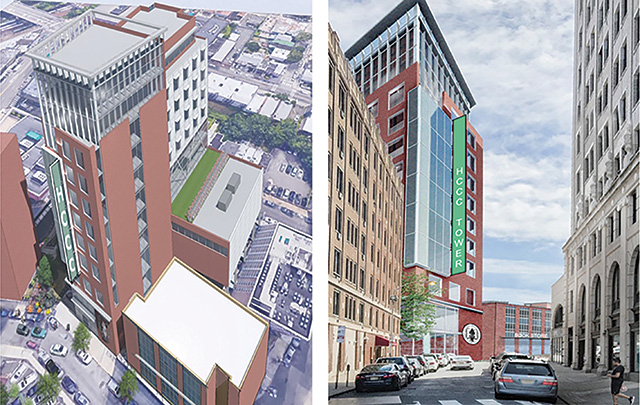Hudson County Community College to Consolidate Student Services in New Campus Building

Architectural renderings of aerial and street views of the Hudson County Community College Center for Student Success (Courtesy of Hudson County Community College)
New Jersey's Hudson County Community College is breaking ground on a new 11-story Center for Student Success that will bring the institution's student services together into one centralized location.
Situated on an existing HCCC-owned parking lot, the 153,186-square-foot, mixed-use tower will replace several of the college's smaller, aging buildings, according to a news announcement. The facility will house 24 classrooms; expanded student services areas; student common spaces; full-size National College Athletics Association gymnasium; fitness center; black-box theater; health sciences laboratories; 85 offices; eight conference rooms; space for sister colleges and partners to offer baccalaureate instruction; and more.
"The HCCC Center for Student Success will be the epicenter of study, creativity, activity, and collaboration between students and the surrounding communities," said Hudson County Executive Craig Guy, in a statement. "Through this new Center for Student Success, HCCC and the County continue to work together to ensure everyone has equal opportunities to excel in their chosen field and drive economic development in the area."
Total construction cost is estimated at $96.3 million. The tower is scheduled to open in Fall 2026.
About the Author
Rhea Kelly is editor in chief for Campus Technology, THE Journal, and Spaces4Learning. She can be reached at [email protected].